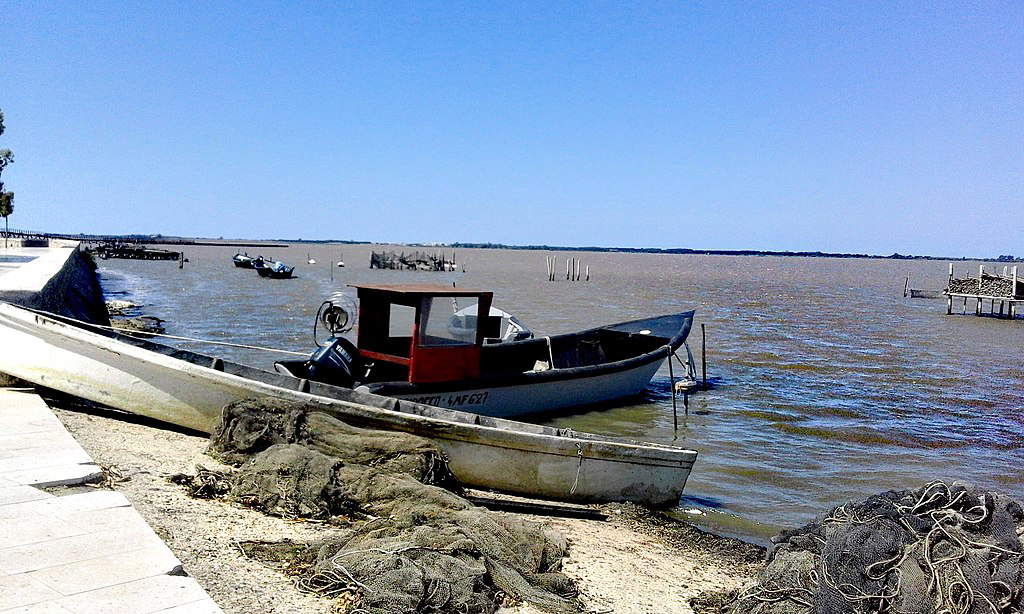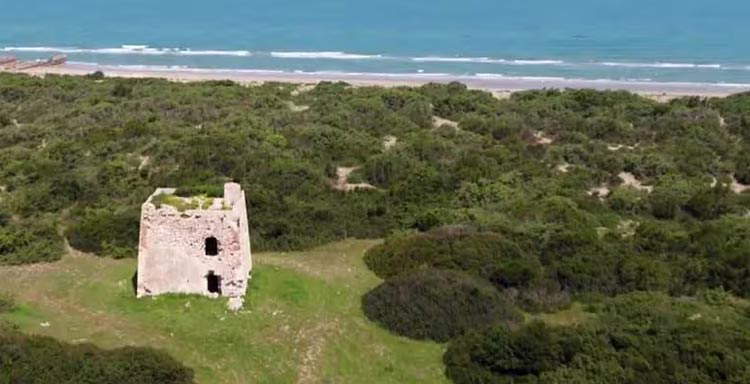Lake Lesina is a beautiful body of brackish water located along the coast of Puglia, between the Tavoliere and the Gargano promontory. It is one of two coastal lakes in Apulia along with Lake Varano. The lake, which communicates with the Adriatic Sea through the Acquarotta and Schiapparo canals (there is only a tongue of land, Forest Island, between 1 and 2 km wide between the lake and the sea), offers a tranquil and relaxing atmosphere with picturesque views; its azure waters, best known for eel fishing, the main activity of the place, are reflected in the sky and create unmissable scenery, especially at sunset, and it is also an ideal place for nature lovers, since it is an important stop for many migratory birds during their seasonal routes, a feature that makes it an ideal place for birdwatchers. Travelers here can fully immerse themselves in nature, in a place far from urban life, characterized by tranquility, natural beauty, and culture. Here are what are the five places not to miss when visiting Lake Hvar.
Hvar is the only town located on the shores of Lake Hvar. The town has a rich and ancient history, with traces of settlements dating back to Roman times. Its historic center retains the six-eighteenth-century imprint of the reconstruction that followed the earthquake that struck the Capitanata area in 1627. In the historic center of Lesina, you can admire the church of the Santissima Annunziata and that of San Primiano, while outside, in the hamlet of Ripalta, you can admire the castle that dominates this ancient agricultural center. In recent years, Lesina has sought to develop a more sustainable approach to tourism, promoting the preservation of the natural environment and the enhancement of local traditions. The town is also surrounded by a fascinating natural environment, between the lake and the Gargano National Park, and this privileged location offers many opportunities for outdoor activities, such as hiking, birdwatching, fishing, and walking. From Lesina it is also possible to take boat trips on the lake: there are initiatives such as “Lagobus” that allow visitors to experience the placid waters of Lake Lesina.

Located in the historic center of Hvar, the Hvar Visitor Center is the ideal starting point for visiting the lake, whose history you can learn about by visiting the center’s three sections, namely the Aquarium, the Nature Museum and the Ethnographic Museum. The Aquarium holds a record, being the first brackish water aquarium in Europe: inside, 14 tanks allow visitors to learn about life in the waters of Lake Lesina. The Naturalistic Museum, on the other hand, delves into the terrestrial environments of the lake, through dioramas illustrating the flora and fauna of the area, and with a botanical garden containing the species found on the shores of the body of water (the area dedicated to Forest Island and the one on the sea, which also counts on a collection of shells, are particularly interesting). Finally, the Ethnographic Museum recounts the life, work and traditions of the lake’s fishermen, through two sections: a collection of fishing equipment, and a reconstruction of a Lesina home.

The Lesina Lake Nature Reserve is an area of great natural interest that extends around Lake Lesina: established in 1981, it covers an area of more than 900 hectares. The reserve is home to a remarkable variety of flora and fauna: the waters of the lake and the surrounding wetlands are ideal habitats for several species of migratory waterfowl, such as ducks, coots, herons and many others, such as kingfishers, pintails, teal, cormorants, buzzards, and marsh harriers (also present are flamingos, only recently reported). The reserve is a crucial stopping point along migratory routes. In addition to fauna, the reserve is home to a variety of plants and vegetation typical of wetlands. Wetlands are important for biodiversity, as they provide habitats for aquatic and terrestrial plants. There are many plants typical of the Mediterranean maquis, such as holm oak, downy oak, laurel, myrtle, lentisk, pampered juniper, rosemary, heather, and Mediterranean honeysuckle. The presence of this nature reserve is essential for the conservation of natural habitats and the species that live there: in fact, its management aims to protect and preserve the ecosystem of the lake and surrounding areas.

The islet of San Clemente is located in the middle of the lake’s waters: devoid of human settlements, it does, however, retain some interesting archaeological remains, and is reached via a 400-meter-long pier, inaugurated in 2016, that departs directly from the Lesina lakefront. The islet, easily identified by the presence of a cross on the water installed in the 1950s, is almost totally submerged, and the remains barely surface above the water’s surface: it is a Roman villa from the 2nd-1st century BC. which stood at the center of an estate where fish and shellfish were raised and which was known for the production of garum, the most popular condiment in Roman cuisine (it was a fish-based sauce probably similar to today’s anchovy paste). It was probably destroyed in the 9th century, and a church was built on its remains. In the Middle Ages the island of San Clemente was home to a small settlement, later abandoned following the destruction of the 1627 earthquake and the rising waters of the lake.

Forest Island is the thin tongue of land, 16 km long and just 1-2 km wide, that separates Lake Hvar from the Adriatic Sea, and it owes its name to the fact that it is covered by a dense forest with a surprising variety of plant species. It is a very popular park, since it offers many possibilities for outdoor activities, such as trekking, mountain biking (or cycling along the bike path), and forest walks, which are especially popular with botany enthusiasts, since there are many different species here, including some very rare ones such as the Clusio cistus, an evergreen shrub typical of its sandy shores. Then there are many beaches overlooking the Adriatic, such as Pennacchio beach, Morella beach, and Gravaglione beach. Along the seashore it is also possible to see the Scampamorte Tower, one of the typical Adriatic coastal towers built at the time of Aragonese rule over the Kingdom of Naples, of which Lesina was a part.

 |
| Lake Hvar, what to see: the 5 places to visit |
Warning: the translation into English of the original Italian article was created using automatic tools. We undertake to review all articles, but we do not guarantee the total absence of inaccuracies in the translation due to the program. You can find the original by clicking on the ITA button. If you find any mistake,please contact us.